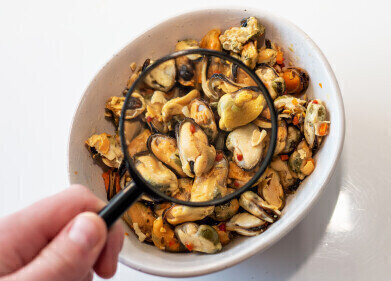GC-MS
Does Garlic Affect Breast Milk? - Chromatography Explores
Jul 13 2019
Breastfeeding is the most natural way to provide infants with everything they need to grow and develop. The World Health Organization recommend breastfeeding exclusively until six months old and continue breastfeeding alongside complimentary foods up to at least two years old. Of course, not every mother can breastfeed, but undoubtedly the mantra ‘breast is best’ is supported by the evidence of numerous studies. But is all breast milk the same? Does what you eat affect the milk a mother produces?
What’s in breast milk - mother nature knows best
Breast milk is the main source of nutrients for infants. It is made in mammary glands situated in the breast that have between 10 and 15 ducts. These ducts start at the nipple and extend and branch through the breast tissue ending in alveoli - small cavities or sacs. The mammary alveoli are where milk is produced and stored - with the ducts transporting the milk to the nipple when it is needed.
Not all of breast milk’s properties are understood, but studies suggest that its nutritional properties are consistent. It is made from nutrients found in the mother’s bloodstream and stored in her body. As well as being optimised nutritionally - providing all a baby’s carbohydrate, protein and fat requirements - it also is a source of protection for a baby as it contains substances to help a baby fight infection. But breastmilk might also be tainted by what a mother consumes - and this includes garlic as a recent study has shown.
Garlic flavoured milk - mushrooms with that?
It is known that certain drugs can affect breastmilk - both prescription and illicit drugs are found in breastmilk. But what about foodstuffs such as garlic. Garlic is widely used in cooking for both its aroma and taste. It is known that garlic also changes body odour and can linger on the breath. Research suggests that garlic - in line with other foods can affect breastmilk - but which compounds are causing the changes?
To find out which compounds could taint breast milk, researchers obtained 18 sets of milk - comprising one sample before garlic and three samples after eating 3g of raw garlic. The samples were analysed using gas chromatography-mass spectrometry/olfactometry. The testers reported that the samples after garlic consumption had a garlic/cabbage like odour - a result confirmed by GC-MS/O. The use of GC to analyse flavours is discussed in the article, Rapid Determination of Strawberry Flavour Integrity using Static Headspace-Selected Ion Flow Tube Mass Spectrometry.
One team carrying out research has identified the garlic metabolites of allyl methyl sulfoxide, allyl methyl sulphide and allyl methyl sulfone as the components in garlic infused breast milk. But only allyl methyl sulphide is an odour compound, so this is thought to be the main odour compound. All three of these compounds are metabolites of garlic, revealing that the compounds are transformed before they are excreted.
Digital Edition
Chromatography Today - Buyers' Guide 2022
October 2023
In This Edition Modern & Practical Applications - Accelerating ADC Development with Mass Spectrometry - Implementing High-Resolution Ion Mobility into Peptide Mapping Workflows Chromatogr...
View all digital editions
Events
Apr 23 2024 Kintex, South Korea
Apr 23 2024 Seoul, South Korea
Apr 28 2024 Montreal, Quebec, Canada
May 05 2024 Seville, Spain
May 15 2024 Birmingham, UK














